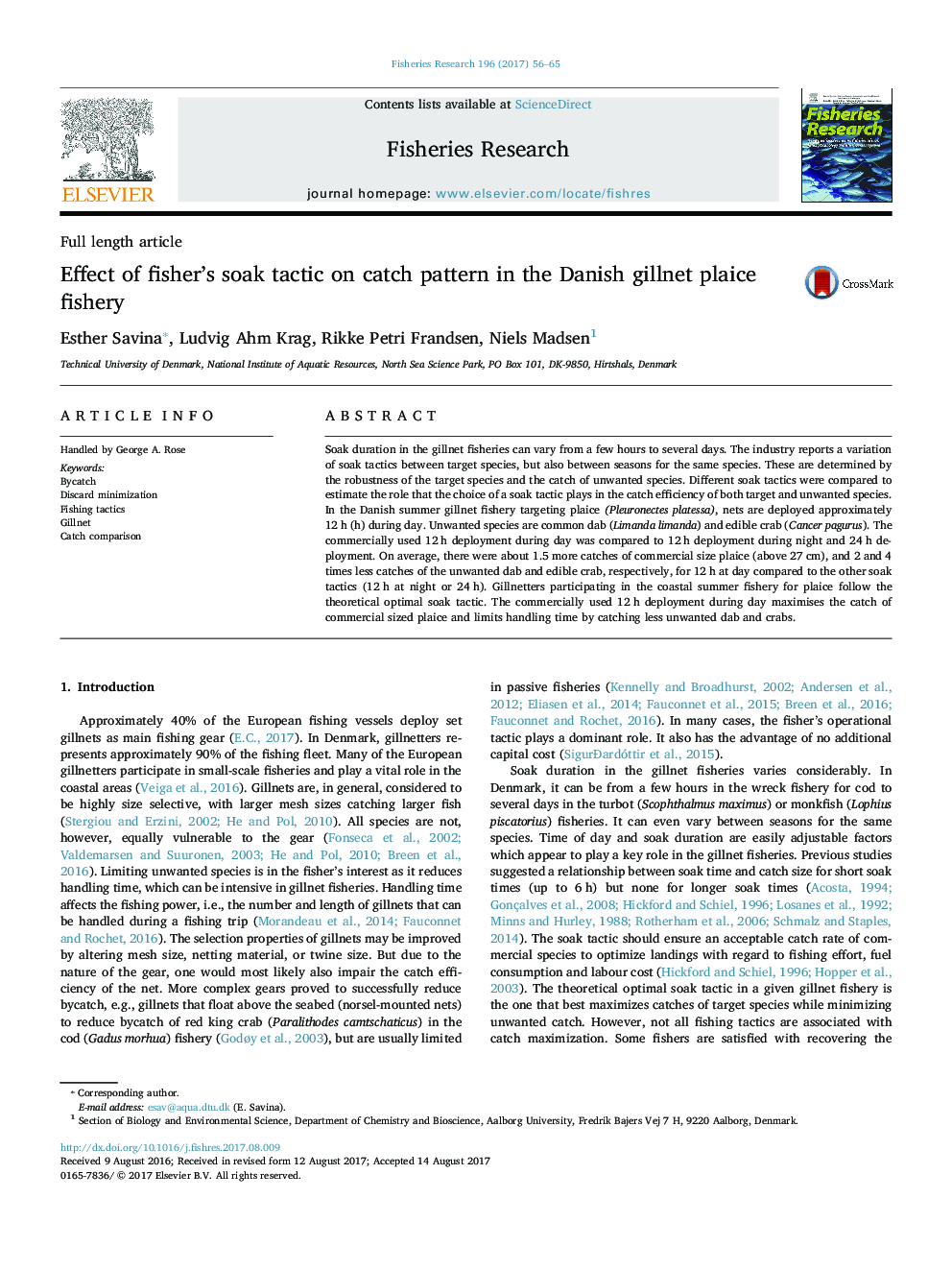| Article ID | Journal | Published Year | Pages | File Type |
|---|---|---|---|---|
| 5765393 | Fisheries Research | 2017 | 10 Pages |
â¢Plaice gillnets were soaked for 12 h during day and night, and 24 h.â¢There were 1.5 more catches of plaice with commercial size for 12 h at day.â¢There were 2 times less catches of the unwanted dab for 12 h at day.â¢There were 4 times less catches of the unwanted edible crab for 12 h at day.â¢Gillnetters can maximize commercial catch and limit handling time by altering soak.
Soak duration in the gillnet fisheries can vary from a few hours to several days. The industry reports a variation of soak tactics between target species, but also between seasons for the same species. These are determined by the robustness of the target species and the catch of unwanted species. Different soak tactics were compared to estimate the role that the choice of a soak tactic plays in the catch efficiency of both target and unwanted species. In the Danish summer gillnet fishery targeting plaice (Pleuronectes platessa), nets are deployed approximately 12Â h (h) during day. Unwanted species are common dab (Limanda limanda) and edible crab (Cancer pagurus). The commercially used 12Â h deployment during day was compared to 12Â h deployment during night and 24Â h deployment. On average, there were about 1.5 more catches of commercial size plaice (above 27Â cm), and 2 and 4 times less catches of the unwanted dab and edible crab, respectively, for 12Â h at day compared to the other soak tactics (12Â h at night or 24Â h). Gillnetters participating in the coastal summer fishery for plaice follow the theoretical optimal soak tactic. The commercially used 12Â h deployment during day maximises the catch of commercial sized plaice and limits handling time by catching less unwanted dab and crabs.
